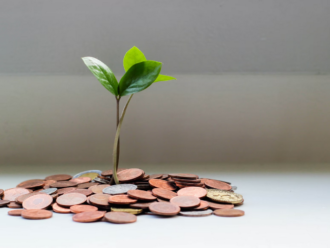Since 2018, sustainable fixed income indexing assets across the industry have more than doubled every year1, with investors increasingly looking at sustainability as an important driver of returns.
The pandemic has also accelerated reallocation within fixed income as the traditional role of government bonds within portfolios has become increasingly challenged by a lower for longer interest rate environment.
As investors search for new sources of yield and resilience, and interest in sustainable investments rises, demand for green bonds – and their issuance – are at all-time highs2.
What are green bonds?
Green bonds are fixed income instruments whose proceeds are exclusively applied towards new and existing ‘green’ projects. The primary purpose of a green bond is to raise capital and investment for projects with environmental benefits, such as renewable energy, green buildings, wastewater management, energy efficiency, and public transport.
What are the green bond principles?
Issuers need to follow the Green Bond Principles (GBP), voluntary process guidelines for transparency and disclosure that promote integrity in the development of the green bond market. The GBP are based on four components:

Green bonds: Why now?
Issuance has grown steadily since the European Investment Bank launched the first green bond in 2007. Today, green bonds may offer multiple benefits, from high quality credit exposure to resilience. Amid a broader societal shift towards sustainability, green bonds may also help investors prepare for net zero alignment, mitigate environmental and climate risks, and understand the impact of these moves – all without incur- ring additional costs.
1. High quality exposure – With an average credit quality of A+3, the global green bond universe skews towards higher quality issuers such as multilateral development banks and government-backed agencies.
2. Portfolio resilience – The increase in volatility in late February and March 2020 highlighted the importance of fixed income within portfolios, as investors returned to government bonds to weather the storm. It soon became clear that sustainable exposures were showing greater resilience than their parent exposures, with less drawdowns and lower volatility over the period. On an issuer basis, green bonds performed in line with their non-green peers, as markets valued their credit worthiness on par.
3. Downside risk mitigation: an environmental perspective – Broadly, issuance of a green bond signals that an issuer S incentivized to fund projects with environmental benefits – and may indicate positive momentum towards net zero alignment in the future.
While green bonds are not a direct hedge against exposure to climate risk, the asset class could help mitigate climate risk by financing projects with climate benefits. For example, investors with a high exposure to climate risk, such as insurers, may be expected to allocate more to green bonds.
4. Environmental impact… at no extra cost – The transparency afforded to green bond investors via impact reporting is a unique feature of the instrument. All green bonds must follow the Green Bond Principles and as such, report the environmental metrics of the projects funded by their proceeds on an annual basis.
Historically, it has been challenging to capture the aggregated impact from multiple green holdings, as reporting is not standardized and projects may fund improvements across multiple metrics.
BlackRock is the first asset manager to offer portfolio level impact reporting for a co-mingled green bond product, helping investors to track and understand the true impact of an investment4.
In conclusion, we believe indexing could provide a transparent and standardised approach to green bond investing. It may offer diversification benefits and resilience during market volatility, as demonstrated in 2020. Active investment steward- ship is also helping to drive long-term change.
Notes and references
1), 2), 4) Source: ‘Index with Impact with Green Bonds’, BlackRock, 31 Dec 2020.
3) Source: Bloomberg, 31 Mar 2021, using Bloomberg Barclays MSCI Global Green Bond Index.
Capital at risk. The value of investments and the income from them can fall as well as rise and are not guaranteed. Investors may not get back the amount originally invested. This material is not intended to be relied upon as a forecast, research or investment advice, and is not a recommendation, or solicitation to buy or sell any securities or financial product or to adopt any investment strategy. The opinions expressed are from BlackRock as of 17 May 2021 and may change as subsequent conditions vary. For more information, visit iShares.com. 1651013.





